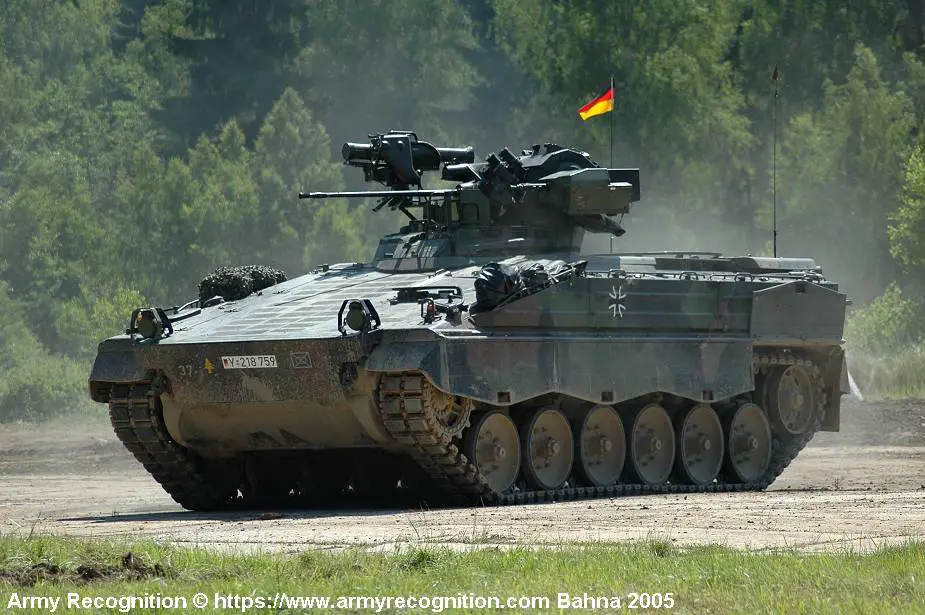As witten by Matthias Gebauer, Marina Kormbaki and Benjamin Schulz in Der Spiegel. France first made it public, and now the USA and Germany are following: the German federal government wants to supply Ukraine with 40 Marder infantry fighting vehicles. According to Spiegel's information, they also want to add Gepard anti-aircraft tanks.
Follow Army Recognition on Google News at this link

German army Marder 1A3 tracked armored IFV Infantry Fighting Vehicle. (Picture source: Army Recognition)
No official figure is given regarding the supply of Marder IFVs, while the U.S. announced the gift of 50 Bradley IFVs. According to Spiegel information, Germany wants to deliver up to 40 Marders to Ukraine to fully equip an infantry battalion. According to the plans of the federal government, the first Marders should be delivered in the first quarter of 2023.
Produced by Rheinmetall, the Schützenpanzer Marder 1 was designed for use with the West German Panzergrenadiere units, mechanized infantry specialized for IFV combat. It has been operated by the German Army as the main Panzergrenadiere IFV from the 1970s through to the present day.
While it used to include a few unique features, such as a fully remote machine gun (MG) on the rear deck and gun ports on the sides for infantry to fire through, these features have been deleted or streamlined in later upgrade packages to bring it more in line with modern IFV design. The MG has been moved to be coaxial, the gun ports entirely welded shut and uparmored. It is overall a simple and conventional machine with one large rear exit hatch and three top hatches for mounted infantry to fire from.
Around 2,100 were taken into service by the West German army in the early 1970s, but the vehicle in its German variant was not sold to any foreign militaries. As the West German Army began to retire older vehicles, the Chilean government agreed to acquire 200 Marders; the government of Greece has considered the purchase of 450 retired vehicles in the past. Argentina uses a simplified and locally produced variant, the VCTP, and has a number of vehicles based on that platform constructed by Henschel and built by TAMSE.
The intended successor to the Marder 1 was initially the Marder 2 project in the 1990s, but after its cancellation, the successor became the Puma in the 2010s. The Marder is currently being replaced by the Puma.
The Marders that will be given to Ukraine could be old models from industry stocks that are currently being refurbished by Rheinmetall. Models from the Bundeswehr stocks could also be added, which will be replaced in the coming months by models refurbished by Rheinmetall. Ukrainian units should be trained by the Bundeswehr (German army). The training can be activated at any time, according to Berlin.
The Marder manufacturer Rheinmetall had around 100 units of the infantry fighting vehicle in stock last summer. Greece gradually received 40 of these in the framework of the "ring exchange" (Ringtauch) and in exchange gave Soviet-era tanks to Ukraine. According to Spiegel's information, the remaining 60 Marders are still available, but would first have to be refurbished. From industry circles it was said that Rheinmetall could get 40 Marders back on track in the next seven months, Spiegel reports. It might be possible to take some models out of the "ring exchange" and redirect them to Ukraine.














